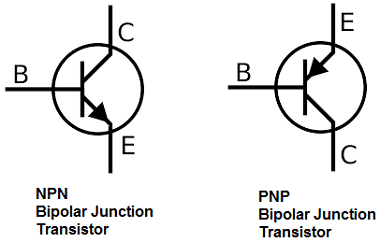
If a signal is applied under these conditions (Fig. 1.2.3a), that if the collector current I C is zero, owing to the base voltage being low enough to cut off base current, the voltage developed across R L will be zero and the whole of V cc will be developed across the transistor so V ce will rise to the supply voltage V cc. 1.2.3 shows the two extreme conditions for the values of I c and V ce. Also, because I c flows through the load resistor (R L) it will produce a potential difference across R L that when subtracted from the supply voltage (V cc) gives the value of the transistor collector/emitter voltage (V ce).įig. The quiescent output conditions must also be considered, as the quiescent base current I b will produce a quiescent collector current I c that will depend on the value of I b and the current gain h fe of the transistor. These values are set by the correct choice of resistance value for R B (Fig. It can also be seen that for this transistor, a DC base bias voltage (R B) of 0.7V produces a quiescent (DC) base current of 40♚. 1.2.2 that if the bias voltage is insufficient, then only the positive tips of the input voltage waveform would produce base current, and consequently severe distortion will occur in the base current waveform a.

1.2.2) applied to the base is called the base bias voltage. If changes in the AC signal voltage (changes in V b) applied to the base, are to produce proportional changes in AC base current I b then some DC value of V B must be used so that positive and negative excursions of the signal voltage occur only on the linear part of the input curve (waveform b in Fig. 1.2.2 shows a typical input characteristic curve for a small signal amplifier transistor where changes in base voltage V b are plotted against the resulting changes in base current I b.

In class A biasing, the collector voltage is kept at approximately half the supply voltage, however this means that the transistor is permanently passing collector current, even when no signal is applied, so power is being wasted, and although class A provides for very low distortion, it is also relatively inefficient in its use of power.įig. If this were allowed to happen it would cause the waveform peaks to be flattened, causing distortion. Also, the signal waveform applied to the base should not drive the transistor either into saturation or into cut-off. Class A BiasĬlass A amplifiers are biased with a DC voltage applied across the transistor base-emitter junction so that their quiescent (or no signal) operating point is on a linear part of the transistor’s characteristics. This section describes how the transistor is biased in common emitter mode, the most commonly used of the three connection modes for voltage amplifiers. Whether collector, base or emitter is chosen as being common to both input and output has a marked effect on how a transistor amplifier operates. A transistor has three connections (collector, base and emitter), whilst the input and output of an amplifier circuit each require two connections, making four in total, therefore one of the transistor´s three connections must be common to both input and output.

Transistors in amplifiers commonly use one of three basic modes of connection. Preventing Distortion with Correct Bias.Advantages and Disadvantages Class A Bias.After studying this section, you should be able to describe:.


 0 kommentar(er)
0 kommentar(er)
